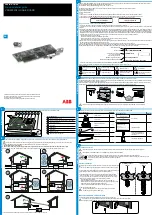
Manual revision 041
Appendix I: Functional Description
SBE 37-SM RS-232
72
Appendix I: Functional Description
Sensors
The MicroCAT embodies the same sensor elements (3-electrode, 2-terminal,
borosilicate glass cell, and pressure-protected thermistor) previously
employed in our modular SBE 3 and SBE 4 sensors and in the Seacat and
Seacat
plus
family.
The MicroCAT’s optional strain-gauge pressure sensor is available in the
following pressure ranges: 20, 100, 350, 600, 1000, 2000, 3500, and
7000 meters. Compensation of the temperature influence on pressure offset
and scale is performed by the MicroCAT’s CPU.
Sensor Interface
Temperature is acquired by applying an AC excitation to a hermetically sealed
VISHAY reference resistor and an ultra-stable aged thermistor with a drift rate
of less than 0.002°C per year. A 24-bit A/D converter digitizes the outputs of
the reference resistor and thermistor (and optional pressure sensor).
AC excitation and ratiometric comparison using a common processing channel
avoids errors caused by parasitic thermocouples, offset voltages, leakage
currents, and reference errors.
Conductivity is acquired using an ultra-precision Wien Bridge oscillator to
generate a frequency output in response to changes in conductivity.
Real-Time Clock
To minimize power and improve clock accuracy, a temperature-compensated
crystal oscillator (TCXO) is used as the real-time-clock frequency source.
The TCXO is accurate to ± 1 minute per year (0 ºC to 40 ºC).
Note:
Pressure ranges are expressed
in meters of deployment
depth capability.













































